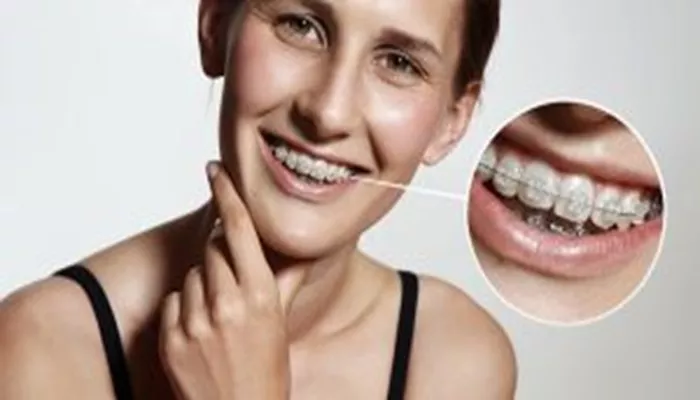The history of braces, an essential tool in modern orthodontics, traces back to ancient civilizations. Over the centuries, the concept and design of braces have undergone significant transformations, driven by advancements in medical understanding and technological innovations. This article aims to provide a comprehensive overview of how braces were invented, from their early origins to their modern-day applications. By understanding the evolution of braces, we can appreciate the strides made in dental care and the ongoing efforts to improve oral health.
Early Origins and Ancient Practices
The concept of moving teeth to improve alignment and function dates back thousands of years. Ancient civilizations, including those in Egypt, Greece, and Rome, recognized the importance of straight teeth for both aesthetics and function.
However, the tools and methods they used were rudimentary compared to today’s braces.
Ancient Egypt: Archaeological evidence suggests that Egyptians used bands of gold or animal sinew to close gaps between teeth. While these practices were not as sophisticated as modern braces, they mark the beginning of human efforts to correct dental malalignments.
Ancient Greece and Rome: Both cultures recognized the aesthetic value of a straight smile. The Greek physician Hippocrates, often referred to as the father of medicine, wrote about dental problems and their treatments. Romans, in turn, used metal bands to stabilize teeth, although these were not used for straightening purposes.
The Renaissance and Beyond
During the Renaissance, advancements in science and medicine led to increased interest in dental health. This period saw the emergence of more specialized dental tools and techniques, although braces as we understand them today were still in their infancy.
16th and 17th Centuries: European dentists began experimenting with various methods to straighten teeth. These included the use of metal bands and wires, which were often painful and ineffective. The concept of applying force to move teeth into alignment was understood, but the technology to do so efficiently and comfortably was lacking.
18th Century: Pierre Fauchard, a French dentist, is credited with being the first to publish a comprehensive book on dentistry, “The Surgeon Dentist.” While his work focused more on dental surgery and hygiene, it laid the groundwork for future advancements in orthodontics.
The Industrial Revolution and Modernization
The Industrial Revolution brought significant changes to society, including advancements in technology and manufacturing. These developments had a profound impact on the evolution of braces.
19th Century: The late 19th century saw the emergence of more advanced orthodontic techniques. One notable figure was Angelo Giuseppe Addison, an Italian dentist who developed the first practical wire crib or band-and-ring appliance for aligning teeth. This device was a precursor to modern braces, using bands around the teeth and wires to apply force.
Early 20th Century: The early 20th century marked a turning point in orthodontic treatment. Edward Angle, an American dentist, introduced the concept of “normal occlusion,” which focused on achieving ideal tooth alignment and bite. His work laid the foundation for modern orthodontic principles and techniques.
Modern Braces: From Metal to Innovations
The development of braces continued to evolve throughout the 20th century, driven by advancements in materials science and technology.
Metal Braces: Traditional metal braces, which use brackets attached to the teeth and connected by wires, became the standard of care for many years. These braces were effective but often uncomfortable and visible.
Advancements in Materials: The introduction of newer materials, such as stainless steel and titanium, allowed for the development of lighter, stronger, and more comfortable braces. These materials were also more durable, reducing the frequency of adjustments and maintenance.
Ceramic Braces: In the late 20th century, ceramic braces emerged as an alternative to metal braces. These braces use tooth-colored materials, making them less visible and more aesthetically pleasing.
Lingual Braces: Lingual braces, which are placed on the inside of the teeth, provide an even more discreet option for orthodontic treatment. While they are more challenging to place and adjust, they are popular among patients who want to maintain a low profile during treatment.
Invisalign and Clear Aligners: The most recent innovation in orthodontic treatment is clear aligners, such as Invisalign.
These plastic trays are custom-made to fit the patient’s teeth and gradually shift them into alignment. Clear aligners are removable, making them easier to clean and maintain. They are also less visible, making them a popular choice for adults and older children.
The Future of Braces
The evolution of braces continues, driven by ongoing research and technological advancements. As we move into the future, we can expect to see even more innovative and effective orthodontic treatments.
3D Printing: Advances in 3D printing technology are enabling the creation of more precise and personalized orthodontic appliances. This technology can be used to create custom braces and aligners that fit the patient’s teeth more accurately, reducing discomfort and treatment time.
Artificial Intelligence: AI-powered software is being developed to analyze dental scans and predict the best course of treatment. This technology can optimize the placement of braces and aligners, ensuring more effective and efficient results.
Wearable Technology: As wearable technology becomes more integrated into our daily lives, we can expect to see more orthodontic devices that incorporate smart features. These devices could monitor progress, remind patients to wear their aligners, and even adjust treatment plans in real-time.
Conclusion
The history of braces is a fascinating testament to human ingenuity and the relentless pursuit of improvement. From ancient civilizations using rudimentary tools to modern innovations in materials science and technology, the evolution of braces has transformed dental care and significantly improved oral health. As we look to the future, we can expect to see even more groundbreaking advancements in orthodontic treatment, continuing the legacy of braces as a cornerstone of dental health and aesthetics. Understanding how braces were invented not only appreciates the strides made in dental care but also highlights the ongoing efforts to improve the lives of patients through innovation and excellence in orthodontics.
Related topics:

